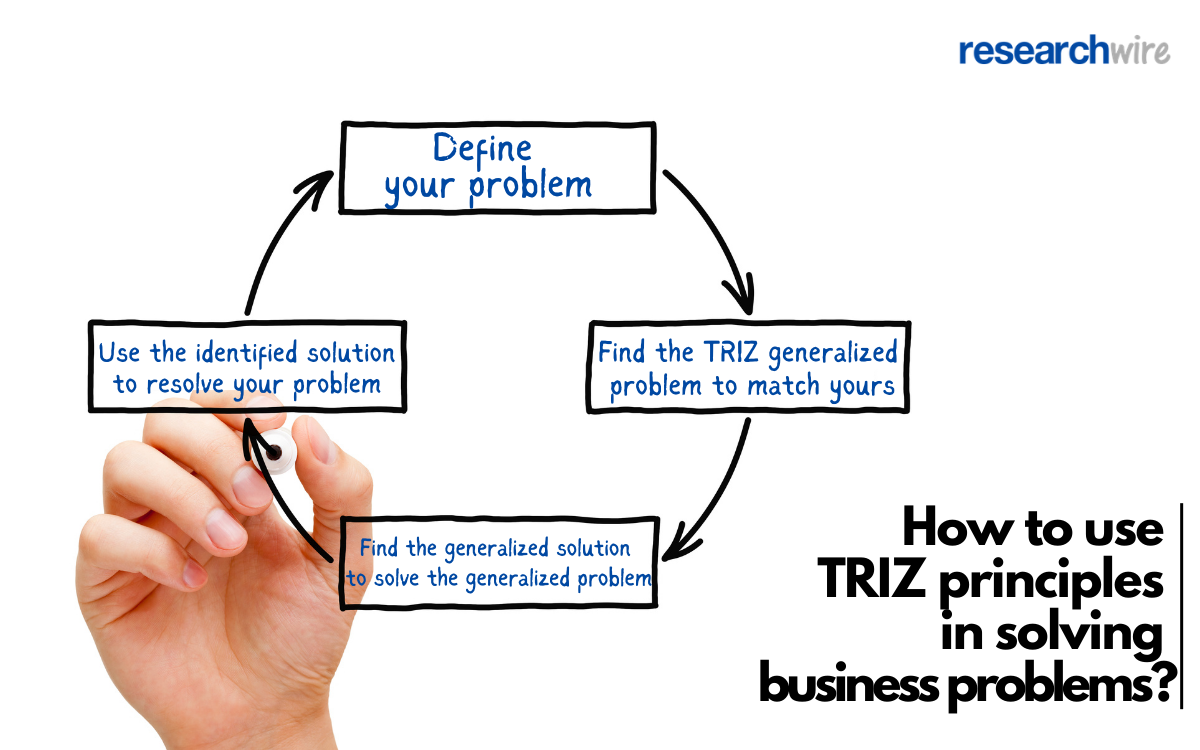As a Founder and Managing Director, Bikram plays a key role in the day to day operations and formulating strategies for smooth execution of research assignments. Bikram is also responsible for client acquisition and client engagements in Asia pacific region. Bikram helps global technology companies monetize their IP assets through automated tools and helps them generate more value out of their IP. He has the expertise of assisting clients on a wide range of technologies such as Semiconductors (circuits and processes), Wireless Technologies, Memory Devices, Cloud Computing, and Consumer Electronics.
Bikram has been advising several Global 500 clients in effective patent portfolio optimization and competitive benchmarking analysis to help them understand their position in the industry. Bikram has extensive experience in assisting clients on high stake US, Japanese and Chinese patent litigation cases. Recently, Bikram has been actively involved in advising clients on new product development strategies and technology Landscape studies.
No matter how many analysis tools and data you have, your project might hit roadblocks. You might not be able to find a way forward. This is when it is imperative that you have to come up with creative solutions. One of the most popular ways to come out of a creative rut is to sit with stakeholders and brainstorm for solutions. The results from a brainstorming solution might not always be dependable as it depends on the knowledge of the stakeholders and a lot of what is usually referred to as “gut feeling.”
This is where TRIZ becomes a handy solution.
What is the Triz methodology?
TRIZ, is a problem-solving methodology that depends on data, research, and logic. Theory of Inventive Problem Solving (TRIZ) takes previous data and the knowledge of many engineers to come up with creative solutions. TRIZ adds predictability, reliability, and repeatability to the problem-solving approach.
Genrich Altshuller and his colleagues developed TRIZ. It was not practiced outside the Soviet Union for several years. The first paper on TRIZ was published in 1956, and he expanded his work on it till the 1980s.
It depends on the universal creativity principles for innovation. TRIZ codifies these principles to make the creative process more dependable and predictable.
Samsung saved over $100 million by implementing TRIZ in some of its projects. It has become the bedrock of innovation at Samsung, and was introduced by Russian engineers they had hired in the early 2000s. Many of the world’s innovative companies such as Samsung, General Electric, LG, Intel, Procter & Gamble, Motorola, HP, Rolls-Royce, etc., have used TRIZ in design engineering, process management, and the development of products.
Philosophy of TRIZ:
Modern TRIZ has reduced innovation to 39 ‘features’, 40 ‘inventive principles’, eight ‘trends’, and nine ‘boxes.’ The above method makes it possible to come up with solutions to any technical problem that can be investigated in a systematic manner. When they are applied to patents, they become even more watertight and make it difficult for competitors to find a workaround.
- To estimate creative problem resolution and product development
- To create principles that are common for all fields of technology.
- To eliminate contradictions.
- To use materials, energy, and knowledge effectively.
TRIZ concepts:
There are two main concepts associated with TRIZ: Generalizing problems and solutions and Contradictions.
Generalizing problems and solutions:
Based on research, TRIZ says that problems and solutions repeat themselves across industries. The problems are contradictions that can be resolved through creative solutions. TRIZ can be used to understand patterns of contradictions and solutions for developing new methods.
Problem identification: Contradictions:
TRIZ identifies contradictions as one of the main issues relating to a problem. Eliminating them leads to solutions. There are two contradictions that exist in TRIZ.
Technical contradictions:
They occur when you improve something and it leads to something else suffering from a negative effect.
Example: A business improves the service and delivery to its customers and it results in more orders. Because of this, they are unable to handle the influx of new customers.
This is a technical contradiction and it can be solved by using automated tools to offer customized services without having to employ more people. Automation can solve this problem with ease. The main technical contradictions are featured in the TRIZ Contradiction Matrix.
Physical contradictions:
They are usually inherent. A system or an object might have requirements that are contrary in nature, resulting in physical contradictions.
Example: A full-suite program has a lot of features and functionality that it offers. But it is not easy for the end-users as they are overwhelmed with so many details.
For an issue like this, the end-users can be offered documentation that helps them to navigate the program better. They can have demos, bite-sized videos, better workflows, or even a change in the UI/UX. Physical contradictions can be solved with the TRIZ Separation Principles.
The 40 inventive principles of TRIZ:
TRIZ’s database has a collection of user-compiled resources. This database has more than 40 principles and forms the basis for problem resolution. The principles include the following:
Segmentation, extraction, local quality, asymmetry, combination, universality, nesting, counterweight, prior counteraction, prior action, cushion in advance, equipotentiality, inversion, spheroidality, dynamicity, partial, overdone or excessive action, moving to a new dimension, mechanical vibration, periodic action, continuity of useful action, rushing through, convert harm into benefit, feedback, mediator, self-service, copying, inexpensive short life, replacement of a mechanical system, use pneumatic or hydraulic systems, flexible film or thin membranes, use of porous materials, changing the colour, homogeneity, rejecting and regenerating parts, transforming physical or chemical states, phase transition, thermal expansion, use strong oxidisers, inert environment and composite materials.
Let’s dive into the first three principles.
- Segmentation- It divides the object into independent parts. It makes an object sectional for easy assembly or disassembly. It increases the degree of an object’s segmentation.
- Extraction- It extracts the ‘disturbing’ part or property from an object. Only the necessary part of the property from an object is extracted.
- Local quality- Transition from homogenous to heterogeneous structure of an object or outside environment.
76 standard solutions of TRIZ:
There are 76 standard solutions that were compiled by Genrich Altshuller between 1975 and 1985. The standard solutions are divided into five broad categories.
- 13 standard solutions are for “improving the system” with little or no change.
- 23 standard solutions are for “improving the system” by changing the system.
- 6 standard solutions are for “system transitions.”
- 17 standard solutions are for “detection and measurement.”
- 17 standard solutions are for “simplification and improvement.”
How to use TRIZ principles in solving business problems?

If you want to solve problems using the TRIZ methodology, here are the steps that you need to take:
- Define your problem:
The first step to implementing TRIZ is to define the problem. Find out if the issue is a physical or technical contradiction.
2. Find the TRIZ generalized problem to match yours:
Match the generalized problem to match your issue. Since problems keep repeating themselves across various industries, it is possible to do this.
3. Find the generalized solution to solve the generalized problem:
The next step is to match the generalized problem to a generalized solution to see how it was resolved by the former.
4. Use the identified solution to resolve your problem:
Use the generalized problem and the particular generalized solution for it and adapt it in your issue to see if it is getting resolved.
Examples of business problems solved using TRIZ:
- The engineers of the Luna 16 lunar landers struggled for months to develop a lamp to illuminate the scene for a camera. After applying TRIZ, they realized that the vacuum environment did not require a lamp bulb there at all.
- Rolls-Royce patented brush seats in jet engines. GE applied TRIZ concepts and came up with a set of patents that rendered the original patent useless. The two companies came to a truce and agreed to mutual use.
- Taiwan saw an influx of Chinese tourists since 2008 which changed the tourist landscape of the place. They used TRIZ techniques to learn about the trajectory of their tourist industry. The results from the study were used by policymakers and businesses that were involved in catering to tourists.
Benefits of TRIZ methodology:
TRIZ encourages organizational problem solving and creative thinking that is useful for analyzing systems and operations, or even identifying and defining problems. It is applicable to every industry and in any environment for acceleration and innovation. That’s why companies such as Chrysler, ABB, Bosch, General Motors, Ford, Kraft, Motorola, Samsung, Eli Lilly, etc., use TRIZ.
- It is structured and systematic:
The most popular problem-solving methodology, aka brainstorming, is great at revealing everyone’s solutions, both good and bad. Everyone is trying to think outside the box. But the pertinent point with brainstorming is “what next?.” TRIZ is more than just problem-solving. It puts the solutions in a clear and structured manner.
2. It has a helpful community:
TRIZ has a global community called TRIZ Effects Database. It gives you answers to queries in the form of a list of Effects, that is, physical phenomena or applications of physical phenomena. Here are some of the free TRIZ resources that are available- Learning Centre and TRIZ Blog.
3. TRIZ works with other tools:
Organizations that use other problem-solving toolkits such as Lean, Agile, or Root Cause Analysis, can easily use TRIZ as a complementary toolkit. They can simply start using TRIZ’s tools and processes when other toolkits do not produce the expected results.
4. Increases innovation:
TRIZ is a rational, structured, and historically proven idea generation machine. In association with strategic thinking tools, it generates a set of data that changes the way organizations think and work. It helps companies generate solutions of high quality but in less time. TRIZ is also used extensively to improve the scope and strength of the intellectual property.
Challenges in implementing TRIZ:
The TRIZ methodology is great for finding quick and practical solutions, even if the problems are complex. One big disadvantage of TRIZ is its lack of formalization. It can lead to complexity at times. It is also reported that TRIZ doesn’t take into account the underlying organizational and cultural issues.
Despite the above challenges, the benefits of TRIZ, far outweigh the negatives. Businesses that want to be competitive should incorporate TRIZ into their innovation strategy and processes.
Researchwire helped a technology giant in improving the design of their wall mounted boilers. The goal was to decrease the exhaust gas temperature by blocking the thermal radiation and guiding the exhaust gas flow over the finned tube of the heat exchanger. Additional goal was to decrease the exhaust gas temperature by blocking the thermal radiation and guiding the exhaust gas flow over the finned tube of the heat exchanger.
Therefore, to move more exhaust gas over the heat exchanger and to maximize energy usage, several principles were investigated such as
• Duration of Action by Moving object (i.e. Exhaust Gas)
• Use of Energy by Stationary Object (i.e. Heat Exchanger)
• Loss of Energy (i.e. Effect of exhaust gas on heat exchanger)
Using the TRIZ principles, finally a new product was developed to solve the earlier issues in the product.
Wrapping up:
The innovative tools that TRIZ offers can help solve problems with the help of its problem-translation processes. It enables real problems to be translated into TRIZ general problems, and all you have to do is follow the steps outlined in it to find the solutions. What are your thoughts about implementing TRIZ techniques for your organization?
Researchwire has the necessary technical know-how and wherewithal to implement TRIZ. We have successfully implemented TRIZ for several companies and helped them solve their bottlenecks, achieve new product development, and circumvent FTO issues.



